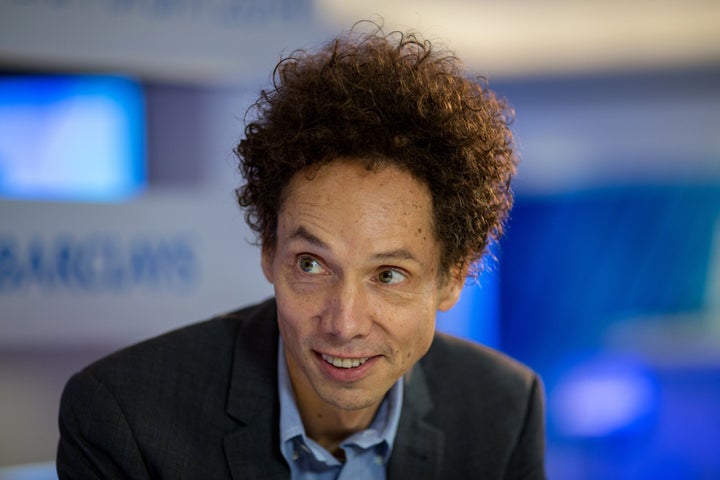
Author Malcolm Gladwell’s new podcast, “Revisionist History,” is only on its sixth episode, but it already tops the iTunes charts and is helping its host make some enemies on college campuses.
The episode released Thursday, called “My Little Hundred Million,” examines the trend of billionaires donating hundreds of millions of dollars to higher education. Gladwell hates this ― not because he hates academia, but because the biggest donations go to institutions that already have endowments larger than some countries’ gross domestic products (think Harvard, Princeton and Stanford universities).
Last week’s “Food Fight” episode picked on Bowdoin College in Maine, and claimed the school puts more effort into filling its dining halls with fancy food than into helping low-income students afford tuition.
Bowdoin ― which is proud to provide students with meals made with cage-free eggs, low-fat milk, grass-fed beef and locally sourced food ― pushed back, releasing lengthy statements about its financial aid options for students and calling the episode “filled with false assumptions and incorrect conclusions.” Alumni, including Black Lives Matter activist DeRay Mckesson, also came to the school’s defense on Twitter.
Gladwell has kicked a hornet’s nest.
When “Revisionist History” debuted, The Guardian described Gladwell as setting out to ask two questions: “When does doing good lead to doing bad, and when does doing good lead to doing more good?” Both inquiries are at the heart of his two most recent episodes: It may seem great to provide students with high-quality meals and to further the pursuit of knowledge by donating money to a renowned nonprofit university, but is it?
If you look at a list of schools that receive gifts of $100 million or more, you’ll struggle to find a name you don’t instantly recognize: It repeatedly mentions Harvard, Stanford, Emory, Massachusetts Institute of Technology, Johns Hopkins, Georgetown and University of Miami, among others. Few public universities are on the list.
Gladwell has welcomed guests to the podcast who attend or work at a school he’s spotlighting.
He debated with outgoing Stanford President John Hennessey, who doubled the school’s endowment to $22 billion during his tenure, on this week’s episode. And last week, Gladwell heard from a Bowdoin student who said eating the school’s fancy food has helped him experience new things.
That student raved about having tried an eggplant parmesan pancake in a dining hall, and Gladwell wasn’t having it.
“I mean, this is completely absurd,” he responded. “This is everything wrong with American colleges.”
These days, it’s normal for colleges to look like country clubs and for the wealthiest, most elite universities to take in the largest donations.
But is that a good thing? Does anyone really think our current system works well?
This election season, Democrats are focusing on how to help more poor and middle-class students afford college, considering the current state of higher education in the U.S.:
- It’s cheaper for a middle-class student to go to Harvard than a state university, because the Ivy League school will provide enough financial aid to cover them, but public schools are constantly raising tuition to keep up with state budget cuts.
- Pell Grants cover a smaller fraction of overall college costs than they have at any other time in the program’s four-decade history.
- Among students attending community colleges ― long considered the cheaper alternative in higher education ― the percentage who took on debt to be able to attend has nearly doubled since 2000.
- The average debt load at the time of graduation has grown at twice the rate of inflation over the past decade.
- Over the past five years, public universities sucked more than $10.3 billion in mandatory student fees and other subsidies to go to their sports programs ― and the schools with the highest fees tend to have more low-income students. This, despite the fact that only 24 of 230 big-time athletics programs are profitable.
Harvard raised about $1 billion last year while Sweet Briar College struggled to raise $12 million just to stay open.
Where are the rich people donating $400 million to make a state university cheap again, the wealthy benefactors for community colleges or the billionaires saving historically black schools struggling to stay afloat? Who’s rescuing small schools on the brink of collapsing?
Colleges have an incentive to add fancy amenities to their campuses because they help attract applicants, which means schools can be pickier about who they accept and then rise in U.S. News & World Report rankings. For example, no one at Louisiana State University stepped in to stop the construction of an $85 million lazy river on campus, even though the state legislature was threatening hundreds of millions of dollars in budget cuts.
Maybe it’s good that an outsider, like Gladwell, is questioning whether a school serving chocolate zucchini cakes is also doing its part to help poor students, and whether a school with $22 billion in the bank needs another donation of $400 million. Why shouldn’t the conventional wisdom of academia be challenged?
Gladwell can reach the elites running higher ed. He’s not a YouTube vlogger venting frustrations in a Tumblr post that will go unnoticed by Ivy League leaders and think tanks ― he’s a New York Times best-selling author and New Yorker writer who is producing a podcast while working on another book.
Higher education needs a gut check, and Gladwell might be one of the best antagonizers to do it.
______
Tyler Kingkade is a national reporter who covers higher education and is based in New York. You can contact him at tyler.kingkade@huffingtonpost.com, or find him on Twitter: @tylerkingkade.
